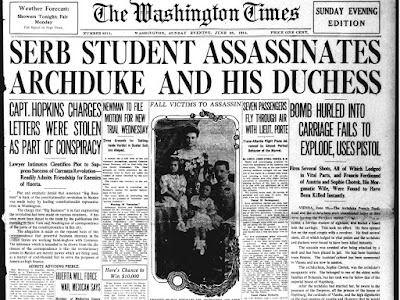Social change and historical events are highly contingent processes, in a specific sense: they are the result of multiple causal influences that "could have been otherwise" and that have conjoined at a particular point in time in bringing about an event of interest. Contrast this situation with what we are looking for when we seek an explanation of a change or event. When we explain an event, we show how and why it was not random or accidental; we identify a set of circumstances that made it necessary or likely in the given circumstances. Contingency and explanation therefore seem to be in tension with each other: a wholly contingent world is perhaps one in which explanation of particular occurrences is impossible.
The appearance of contradiction lessens when we realize that "contingent" is not the same as "random" or "uncaused". (See an earlier post for an effort to disentangle a number of related causal concepts; link.) When a uranium atom decays at a particular moment, this is a truly random event. There is no underlying cause that brought about the decay of the nucleus at this particular moment. When a race riot occurs in in Detroit on July 23, 1967, this was a contingent occurrence -- it did not have to happen; but it was not random, spontaneous, or uncaused. Rather, there were multiple causal factors and processes, along with a number of accidental and spontaneous events, leading to a pathway of social actions that resulted in largescale confrontation, arson, violence. Here is how the Kerner Commission described the occurrence of major race riots in the United States (link):
Disorder did not erupt as a result of a single "triggering" or "precipitating" incident. Instead, it was generated out of an increasingly disturbed social atmosphere, in which typically a series of tension-heightening incidents over a period of weeks or months became linked in the minds of many in the Negro community with a reservoir of underlying grievances. At some point in the mounting tension, a further incident--in itself often routine or trivial--became the breaking point and the tension spilled over into violence.We can understand this account as depending on a distinction between proximate and distal causes; distal causes (a pattern of police brutality, say) set the stage for racial tension, which makes an outbreak of violence more likely; and a precipitating (proximate) event triggers the outburst. The point in this paragraph is that the triggering cause is not the sole cause, or even the most important cause. But all these factors are causally relevant to the outcome. We say that the riot was contingent because there are many ways in which the tensions created by the background conditions could have been defused -- a progressive mayor could have enacted a police reform along with a jobs program, a charismatic leader like Dr. King could have emerged in Detroit who helped to channel tension into electoral politics rather than an outbreak of violence, the Federal government could have been more successful in its civil rights reforms and its War on Poverty. Or the raid on the blind pig could have happened in a driving rainstorm, with the result that no crowd gathered. So the outcome was not preordained. It was contingent, but it was caused.
So it is not the case that a contingent world is one in which nothing can be explained. A chaotic and random world has that property; but contingency is not chaos. Rather, for many historical and social events we can identify a set of background or standing conditions that elevated the probability of the event, we can sometimes identify independent causal processes underway at the same time that interact to further elevate the probability of the event; and we can identify one or more unrelated and random events that served as a trigger to the occurrence of the event of interest.
This is one reason why the strategy of seeking out causal mechanisms in the social world is an appealing approach to social explanation. Appeal to causal mechanisms allows us to make sense of both important features of the social world: that processes and events are contingent, and that many processes and events are amenable to causal explanation.
When researchers set their goals on identifying general causes for groups of social phenomena, they often have in mind the idea that there are similarities in the background standing causal conditions that serve to increase the likelihood of a certain kind of event -- revolution, riot, economic crisis, or period of rapid innovation. And indeed, there are credible hypotheses about such conditions; this is the underlying rationale for the application of Mill's methods to causal reasoning in the social sciences. It is indeed perfectly credible that there are pervasive social conditions that make certain kinds of social events more likely -- a good university system and rapid technological innovation, a defeat in war and political turmoil, the pervasiveness of Protestantism and the hockey stick of market activity.
This insight is closely related to the distinction that Bhaskar and critical realists draw between closed and open systems. In an open system we cannot predict future states of the system because we cannot achieve causal closure; there is always the possibility of another kind of causal influence or mechanism that can offset the workings of the known mechanisms.
The page from the Washington Times above draws attention to an event that was itself highly contingent and yet explicable (the bungled but eventually successful effort to assassinate Archduke Ferdinand); leading to an important historical event (the outbreak of World War I) which was also both contingent and explicable.

1 comment:
Thanks Daniel Little ! I love your blog & writing. Thank you for making it available to a wide public and I hope it will continue to be so in the future !
Post a Comment